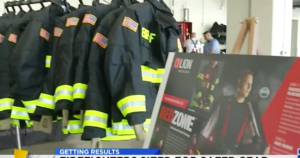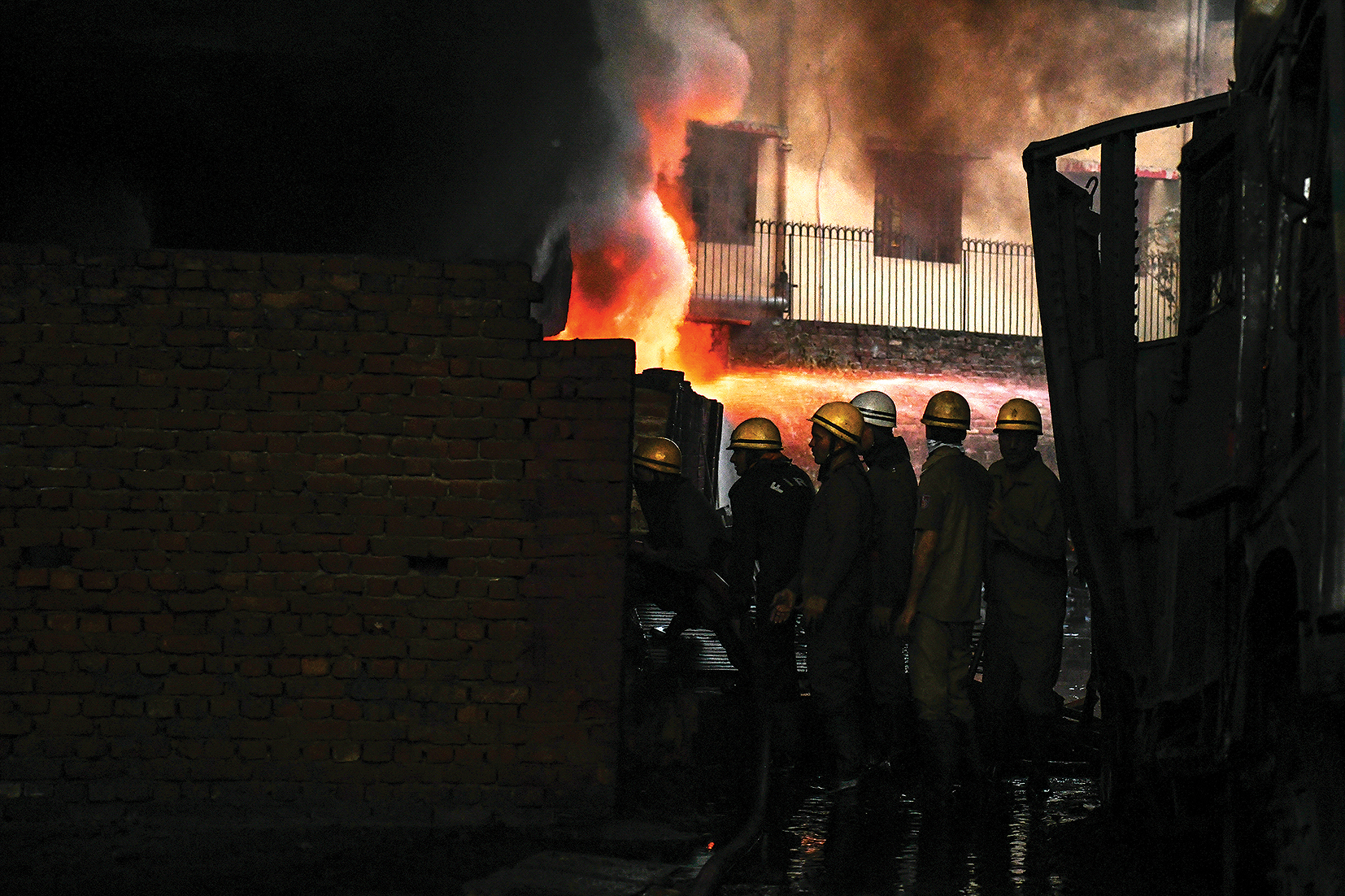The Delhi Fire Service will soon distribute a new suit to its 1,300 firefighters to ensure better protection. Here we look into the professional hazards that plague the firefighters
Severe burns, suffocation, dehydration and direct exposure to chemicals, these are a few of the problems firefighters in the Capital face. To tackle these problems, Delhi’s Fire Department has procured new firefighters suit that can protect the firefighters more efficiently.
The suit which costs Rs 50,000 is said to protect the firemen from high-intensity fires, and it will cover all their body parts, giving them complete protection.
Meanwhile, firefighters in Orlando will receive a new uniform known as “turnout gear,” which is designed to protect them against carcinogens.
Rajesh Shukla, a firefighter, has been dealing with major fire incidents, including the one that recently took place at Hotel Arpit Palace. He has been in the service for the last 13 years and has attended approximately 5,000 calls during his tenure.
On asking what impact the new suit will have on their work, he says, “It’s a fire proximity suit.” Breaking down the term, he continues, “basically it will increase the chances of getting closer to the fire, which usually is not the case, this suit will enhance that.”
“When you enter a hot zone, with the suit you can get yourself closer to the fire. Also, if you use it, along with the breathing apparatus, then you can also handle the smoke,” Shukla adds.
He also points out that the breathing apparatus in western countries is “more light weight.” According to Shukla, firefighters carry the breathing apparatus in their bags, as “it hardly weighs more than 1.5 to 2 kgs.”
“We have extreme winters and summers in India. If you just stand outside wearing the suit, you will be dehydrated due to sweating.” He says that is precisely the reason why the suit is only used when entering a “hot zone.”
Shukla says he himself tried the suit “and felt a significant difference in the weight of the suit.” Even the helmet he says, “is of better quality than the previous ones.”
Adding that the new suit will provide “more protection to the firefighters because it’s lightweight,” he also says that since the firefighters carry “branch” (a hose with a nozzle), “the suit gets wet, while fighting in the fire. It gets really heavy, so it becomes extremely difficult for us to do our job.”
With the suit that is currently being used, Shukla had suffered several skin burns, performing his duty. “The suit is such that it will not catch fire, but once you enter the hot zone, the temperature starts increasing and after crossing 70 degrees Celsius, the skin starts burning from inside even as the suits cloth remains the same,” he says as he recalls the time when his back got severe burns.
Delhi’s Chief Fire Officer, Vipin Kental, told Patriot that the new suits “will be distributed to the firefighters within a week or so.”
“These fire proximity suits can give better protection to the firefighters,” he said. Kental also mentioned that the department is “procuring one drone on an experimental basis to see how useful it actually is.”
He further informs that the drones are being procured from GeM (Government e Marketplace). Since drones are not allowed to be flown, Kental says, “Permission has already been granted by the concerned departments, so we can use them.”
While we only consider high-intensity fire dangerous for the firefighters, there’s another thing, which is hardly spoken of — cancer. Jeff Beckwith, Deputy Fire Chief of PRFD (Prince Rupert Fire Department), British Columbia said, “Fire is the sensationalism risk, it’s the flames and the big explosions and you know that’s exciting, but cancer is the one that sneaks up on you.”
And this is not a myth, a firefighter named Francis Wolfe, who worked for the PRFD, was inflicted by cancer because of the 30 years that he spent as a firefighter. Fortunately, it was discovered in its early stages, so it was treatable.
In a Quesnel Cariboo Observer report, he spoke of a conversation with his doctor when he first got to know of the cancer. “He told me that I have air packs on, so I don’t breathe in fumes. But when you’re exposed to high heat and chemicals, toxins get into your bloodstream,” Wolfe recalls the conversation with his doctor.
His doctor asked him as to how many times he used to go the bathroom, to which Wolfe replied, “sometimes I wouldn’t go for hours, while fighting a fire.” Hearing this, the doctor said, “that’s the problem because that stuff ends up in your bladder.”
A 2018 report by the researchers at the University of Fraser Valley cited various elements like carcinogens — such as benzene, formaldehyde, arsenic and cadmium — being present in the buildings that firefighters have to enter.

“The fires in those situations can roar to extremely high temperatures. When that happens, those chemicals are absorbed into firefighters’ skin and hair through their suits, and unlike the flames themselves, firefighters carry those carcinogens out of the burning buildings with them,” the report said.
As per the NICPR (National Institute of Cancer Prevention and Research), men have 9.81 per cent risk of developing cancer before the age of 75 years. As per NICPR data, 4,13,519 men died in India due to cancer in 2018.
The National Health Profile, curated by the Union Health Ministry, predicts that the total number of male cancer patients will jump to 6,22,203 in 2020 from the current 5,22,164.
When the firefighters in Orlando got to know that they would be getting a new suit, the Chief of the fire service in the state, Roderick Williams said, “You look at the national average, statistic-wise, and between 14 and 19 per cent of firefighters die from cancer, so it is a silent killer.”
According to the Canadian Cancer Society, “An average Canadian male has a 45 per cent chance of developing cancer at some point in their life. This risk increases to 54 per cent if that individual is in the fire service.”
The Quesnel Cariboo Observer report also said that Worksafe BC, the Worker’s Compensation Board of British Columbia, “accepted 103 work-related death claims between 1998 and 2018 for people working in the occupations of fire captain, firefighter and volunteer firefighter.”
This month, Boston 25, a news channel, along with nuclear physics Professor Graham Peaslee, tested the jacket of a firefighter who got cancer. In a Boston 25 news report the professor said “We ran 4 samples and said yes, they’re fluorinated and they’re rather highly fluorinated. That means it has the potential to have PFAS chemicals in there. And the highly chlorinated suggests there’s a lot of PFAS there.”
The report further stated, “PFAS, as we’ve shown in recent Boston 25 reports, are man-made chemicals used in various industries including firefighter gear as a water repellent.”
According to the Centers for Disease Control and Prevention, some studies have shown an increase in certain kinds of cancers for workers who are exposed to PFAS.
Not only did they test one jacket, but 24 from around the United States, and Professor Peaslee found “all 24 uniforms were fluorinated and highly fluorinated in some instances.”





